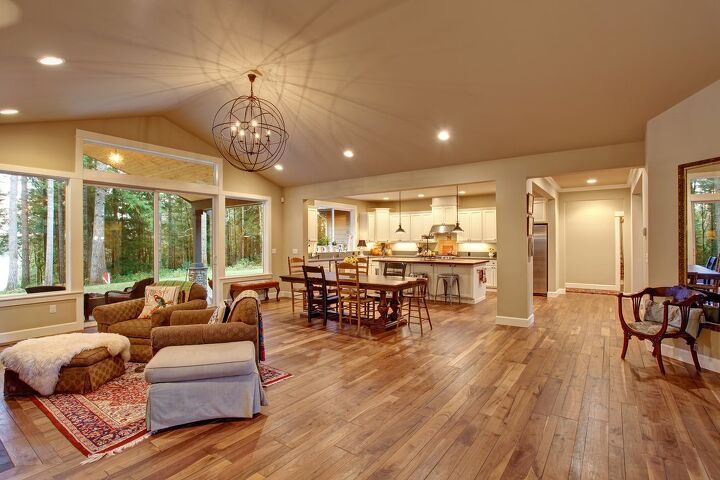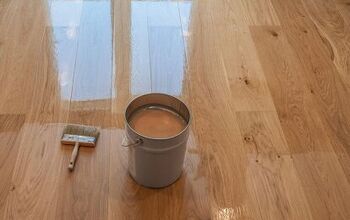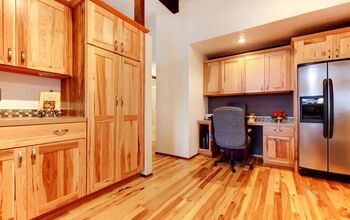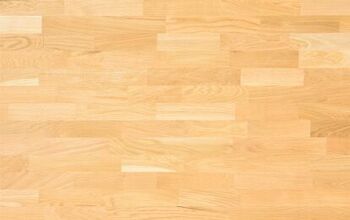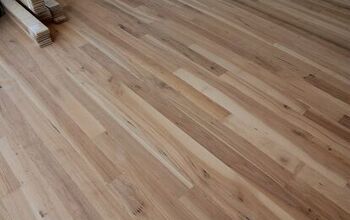What Are The Pros And Cons Of Amendoim Wood Flooring?

Hardwood flooring is undeniably stylish and timeless. Gone are the days of carpeted kitchens, dining rooms, and entryways. Many homebuyers are looking for wood floors in areas of high traffic throughout a home.
Amendoim is quickly becoming one of the most popular choices for hardwood flooring. Classified as exotic wood flooring, Amendoim originates from South America and can also be referred to as Brazilian Oak in some manufacturing circles.
With a wider range of colors than some exotic woods, Amendoim adds warmth and character to your home. If you are looking for a flooring option that will seamlessly match any style, is durable, and will add a level of luxury to your home, Amendoim would be a good fit for you.
There are a few pros and cons to Amendoim wood flooring.
The pros of Amendoim wood flooring are that it is extremely durable, comes in a variety of colors and patterns, and will add resale value to your home. The cons of Amendoim flooring are that it is expensive, comes with a few sustainability issues, and can be difficult to work with.
Many homeowners are looking toward exotic hardwoods to complete their home renovations. Read on to see if Amendoim flooring would work in your home!
Do You Need to Hire a Flooring Contractor?
Get free, zero-commitment quotes from pro contractors near you.

What Are The Pros Of Amendoim Flooring?
There’s no doubt about it— hardwood floors are a big investment. It’s important to weigh all the pros and cons before taking the leap. Below are a few pros that come with Amendoim flooring.
Durability
Of all the imported woods available in the United States, Amendoim is going to be one of the most durable. On the Janka Hardness Scale, an industry-wide standard used to measure the overall hardness or durability of a wood species, Amendoim measures at 1912.
This is pretty high, making it one of the harder woods on the market. Its status on the Janka Hardness Scale makes Amendoim more durable than maple or red oak.
Amendoim wood floors won’t be as susceptible to scratches, dings, or dents. It will hold up well over time, no matter how hard you are on your floors. If you’re someone who experiences a lot of foot traffic in your home, Amendoim would be a great choice. You won’t be constantly monitoring the scrape of chair legs or the scuff of shoes on these hardwood floors.
Engineered vs. Solid Wood Floors
Like any hardwood, Amendoim can come in both engineered wood or solid wood form. Engineered wood is a favorite of contractors today because it’s cheaper but still worthwhile.
Engineered hardwood flooring is when a thin layer of hardwood is laid over a laminate core of plywood material. Engineered Amendoim wood flooring is going to be cheaper, but may not hold up as well under duress. DIYers often prefer engineered wood, as it is easier to work with and more pliable.
Solid wood flooring— especially Amendoim as it sits so high on the Janka Hardness Scale— is going to require professional installation. It will be far more durable than engineered wood flooring and could last years and years without needing to be replaced.
Wide Variety of Colors and Patterns
Amendoim can range in shade from tan to orangey brown to lighter reds. Amendoim is going to be part of the lighter wood family, rich with swirls and knots to give your flooring a considerable amount of character.
Whether you decide to go for the reddish-brown heartwood with dark striping or the yellowish-brown sapwood, your Amendoim flooring is going to shine. The soft brush-stroke nature of the wood gives it a watercolor feel.
Over time, Amendoim will darken with sunlight. Many of its Brazilian cousins will do the same.
Resale Value
The resale value of a home with wood flooring is undeniable. The resale value of a home with exotic, imported wood is even more undeniable. Homebuyers are looking for some of those more luxurious perks.
Any carpet and vinyl flooring will need to be replaced after a certain amount of time, especially if they’re used in areas like kitchens or living rooms where there is a high volume of foot traffic. Wood flooring may need to be re-sanded, but not necessarily, not if you’re taking good care of your floors.
Being able to say that your home is fitted out with exotic Amendoim wood floors is going to be a great ROI— return on investment.
The increase in your home’s value with domestic wood flooring is around 2.5%. With exotic imported Amendoim hardwood flooring, you’re looking at an almost 3% increase in value when it comes time to sell.
In the end, you’re saving a significant amount of both time and money by opting for hardwood floors.
Domestic vs. Imported Wood Flooring
Any wood made in North America (the U.S. and Canada) is known as domestic hardwood flooring. Imported hardwoods can come from anywhere in the world. Amendoim comes from South America and can be harvested from any of these regions:
- Argentina
- Paraguay
- Brazil
Domestic hardwoods such as birch, cherry, maple, and pine are certainly hard and durable, but nowhere near the same as lumber that comes from South America.
What Are The Cons Of Amendoim Flooring?
Even though Amendoim flooring is a great addition to your home, there are a few cons to keep in mind before opting for this imported wood.
Expense
Compared to domestic hardwoods, imported wood flooring is considerably more expensive. With Amendoim flooring, you can get it as an engineered hardwood. Amendoim engineered hardwood can range in price from $2.89 per square foot to $6.69 per square foot. Pricing really depends on the finish, the distressing technique, and how wide and thick you’re looking to have for each plank.
Solid Amendoim flooring is going to be significantly more expensive. Solid Amendoim can range from $4.09 per square foot to $7.70 per square foot. Handscraped floors are going to be even more expensive, though many homeowners believe it is well worth the additional cost.
Sustainability Issues
When purchasing hardwoods from Brazil or other South American nations, you want to keep in mind how ethically sourced or how ethically sustainable your purchase may or may not be. Just because you’re buying imported wood doesn’t necessarily mean you or whomever you buy your flooring from is participating in rainforest devastation.
The responsible clearing of land actually promotes a successful and thriving ecosystem. However, you want to make sure that you’re doing your part in researching where your Amendoim comes from. Be on the lookout for the gold standard of ethical deforestation practices, the Forest Stewardship Council.
This organization is in place to ensure that all wood harvested from regions across South America follow and maintain good forestry practices. These practices are meant to ensure that the overall forest is preserved. Any company affiliated with the FSC logo is going to be a good source from which to purchase your Amendoim flooring.
Warning: As tempting as it may be to purchase cheap imported lumber, the mill workers in South America were most likely significantly underpaid. Make sure your Amendoim purchase is stamped with the FSC logo to avoid contributing to unethical business practices.
Difficult To Work With
Because Amendoim is so hard, it can be quite tricky to work with. Even the most avid Do-It-Yourself-ers should avoid installing Amendoim hardwood flooring on their own. If you’ve never installed hardwood before, Amendoim is not the wood you want to use to test your budding skill-set.
Instead, you’ll definitely want to hire a professional. Drilling holes before driving in nails is a necessity, and if you don’t know what you’re doing, you can waste a lot of expensive material.
If you do decide to install the hard and touch Amendoim yourself, know that it does work well with both hand and power tools. You’ll want to use a manual nailer or a pneumatic nailer if you’re so inclined. While Amendoim holds screws well, you’ll want to make sure your installation process is slow and steady. Professional sanding and finishing of your Amendoim hardwood flooring is definitely recommended by many lumber providers.
Related Questions
Is Brazilian Oak The Same As Amendoim?
In certain circles, Amendoim is often referred to as Brazilian Oak. Brazilian Oak is very similar to Amendoim and is part of the same wood family.
What Kind Of Wood is Amendoim?
Amendoim an imported hardwood, classified as a type of Brazilian Oak.
How Many Days Does Hardwood Flooring Need To Acclimate?
At the very least, you want to give your hardwood floor 3 days to acclimate before moving in furniture or walking on it excessively.
How Is Wood Hardness Measured?
The Janka Hardness Test measures how durable wood samples are under duress. It measures how much force would be required to embed an 11.28-millimeter wide steel ball halfway into the wood.
Do You Need to Hire a Flooring Contractor?
Get free, zero-commitment quotes from pro contractors near you.

Our Takeaway
Of all the imported woods you could choose for your home, you really can’t go wrong with Amendoim. Even though it’s going to be a little pricier than domestic lumber, the luxury and durability of Amendoim can’t be beat. No matter if you’re re-flooring the kitchen, the hallways, or the living room, Amendoim will be sure to set your home apart. With its varying shades and finishes, Amendoim has something to offer every aesthetic.
Related Guides

Paige is an elementary school librarian with a passion for writing. Her hobbies include reading an exorbitant amount of fantasy, slowly teaching herself to draw, and home decor. While she isn't the most talented artist or interior designer, what she lacks in skill she more than makes up for in enthusiasm. When she's not curled up with a book, you can certainly find her curled over the keyboard.
More by Paige Hanawalt



